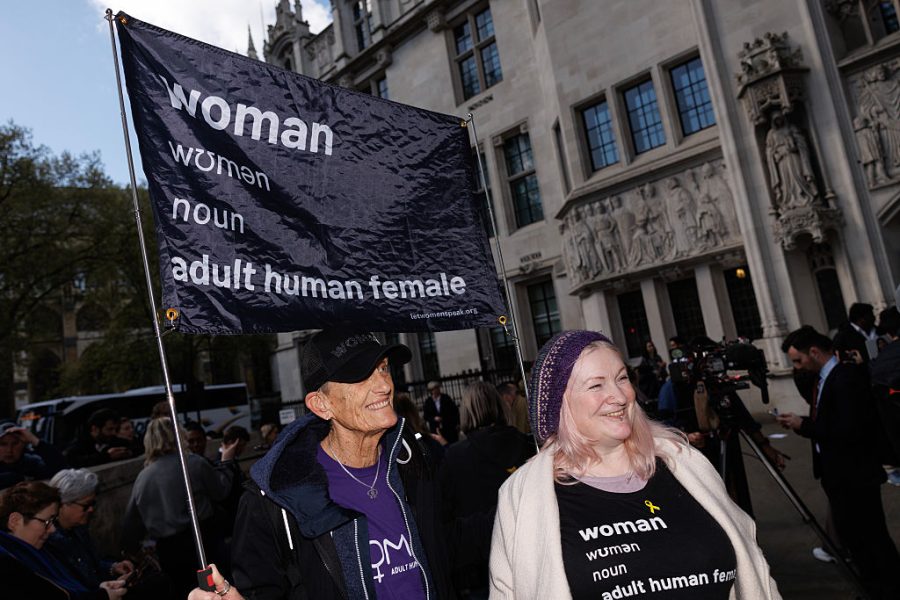The UK Supreme Court has ruled that a woman is someone whose sex is female. The judgment, handed down this morning by Lord Hodge, sought to establish coherence in an area of law that has become the focus of an emotional, and sometimes heated debate. For that we should all be grateful.
The law as it stands is a mess. On one hand, the long-established principle that being a woman is a matter of biology underpinned the Sex Discrimination Act of 1975 – which stated most clearly that, ‘“woman” includes a female of any age, and “man” includes a male of any age’. When the law was updated in 1999 to include protections against discrimination on the grounds of gender reassignment, it did so without changing the meaning of sex.
No longer can the Scottish government try and expand the definition of the word woman
On the other hand, though the Gender Recognition Act of 2004 declares that:
Where a full gender recognition certificate (GRC) is issued to a person, the person’s gender becomes for all purposes the acquired gender (so that, if the acquired gender is the male gender, the person’s sex becomes that of a man and, if it is the female gender, the person’s sex becomes that of a woman).
Seriously, what was Tony Blair’s Labour government thinking when this confused piece of wishful thinking was passed by parliament? It might have been forgiveable if the legislation had stopped at the word gender, but sex itself was dragged into the debate. This paragraph has been used to obfuscate reality; Lord Hodge cited it specifically as he explained the court’s decision that the protections set out in the Equality Act of 2010 should refer to biological sex rather than – as he termed it – ‘certificated sex’.
In brief (the full judgment runs to 88 pages), the court decided that ‘interpreting “sex” as certificated sex would cut across the definitions of “man” and “woman” and thus the protected characteristic of sex in an incoherent way’.
Of course it does! The resulting muddle and confusion has fuelled a febrile dispute that has been raging since around 2016 when transgender activists called for anyone to be allowed to self-identify their gender (i.e. legal sex) by statutory declaration alone. Shockingly, it was a Conservative government under Theresa May that caved in to those demands in order and pledged to do just that.
Thankfully, now, some semblance of sanity has been restored to UK law. No longer can the Scottish government try and expand the definition of the word woman to include someone who ‘is undergoing or has undergone a process (or part of a process) for the purpose of becoming female’. That sentence was taken from the Gender Representation on Public Boards (Scotland) Act 2018, which set out the objective for equal representation of women, but got bogged down in a debate over who was a woman, and how the Scottish government didn’t know its cervix from its prostate.
That piece of legislation also seeded the legal challenge that ultimately led to the Supreme Court judgement this morning. For Women Scotland, a grassroots campaign established by Magdalen Berns, Trinia Budge, Marion Calder and Susan Smith, are to be congratulated and thanked for their efforts and their advocacy.
There are loose ends that will need to be tidied up. The Gender Recognition Act creates a legal fiction and then obscures it. According to section 22 of the Act, ‘it is an offence for a person who has acquired protected information in an official capacity to disclose the information to any other person.’ That includes the fact that a GRC has been issued, and that the sex marker on a birth certificate has been changed.
How will providers of single-sex services cope with a transwoman on their doorstep who swears blind that they are a woman of the female kind? The provider can ask to see a gender recognition certificate, but there is nothing to stop the trans woman shrugging and saying, ‘what’s a GRC?’ After a birth certificate has been amended, the service provider is going to have a hard time proving their suspicions.
These issues are manageable, perhaps with small tweaks to the GRA. This might be coming Keir Starmer’s way. It is the job of government to make policy that is robust, coherent and does not contradict common sense. Let’s see if Starmer can manage it.
While I have skin in this game – I transitioned in 2012 – I don’t have a vested interest. I never bothered to apply for a GRC and I don’t use services provided for the other sex. The first decision was easy. I didn’t see any need to change the past in order to live in the present. The second took me a little longer, even in situations where I am known and respected. If I use women’s spaces, my female friends are going to have a harder time keeping out trans women whom they are not so happy with.
It does raise the question of whether the Gender Recognition Act is needed at all. There have been calls for it to be repealed, but following today’s judgment, it can now perhaps be left to wither on the vine. If a GRC no longer requires the law to treat someone as the opposite sex, then its key purpose is swept away without Starmer having to roll up his sleeves.







Comments